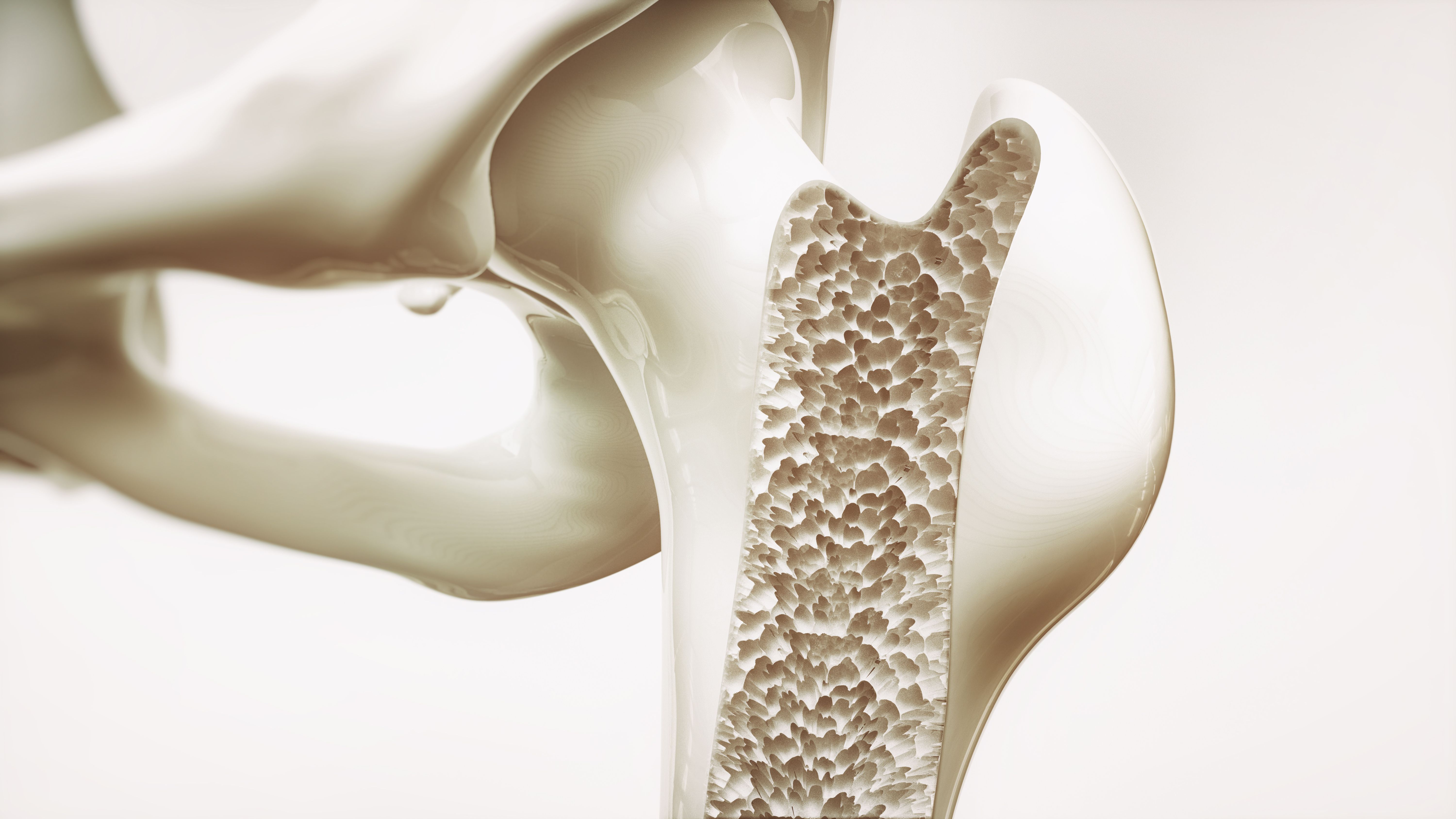Wearable Device for Osteopenia in Postmenopausal Women Granted FDA Clearance
Osteoboost is the first non-pharmacological therapy approved to treat low bone density in postmenopausal women.
Image credit: crevis | stock.adobe.com

The FDA has cleared Bone Health Technologies’ wearable belt device for the treatment of low bone density in postmenopausal women. The regulatory action makes the Osteoboost belt the first non-pharmacological device-based prescription therapy to gain approval in the United States for the treatment of osteopenia.1
“[The] groundbreaking decision represents the first non-pharmacological therapy approved to treat this widespread and serious condition. With Osteoboost, we have a new treatment option—free of serious adverse events—that taps into the body’s natural mechanism to stimulate bone growth,” Bone Health Technologies CEO Laura Yecies said in a press release. “Women’s health has been underserved for too long, making this a huge step forward for older women who have lacked effective treatment options and are seeking an effective way to protect their bone health.”1
Osteoboost, which was previously granted FDA Breakthrough Device Designation, was specifically developed to address diminished bone health in women with osteopenia. The device is worn on the hips, which provides targeted, calibrated vibration to the lumbar, spine, and hips, according to Bone Health Technologies. In clinical trials, Osteoboost was found to slow the loss of bone strength and density in postmenopausal women.
The National Institutes of Health-funded, double-blinded, sham-controlled study showed the efficacy of Osteoboost to stimulate bone growth and maintain bone mineral density and strength through low-frequency vibrations the device sends directly to the lumbar spine and hips. The study’s primary endpoint was change in vertebral strength measured by CT scan. Patients who used Osteoboost at least three times per week lost an average of 0.48% bone strength compared with 2.84% in the non-treatment group, with a relative difference of 2.36% (P=0.014).
In terms of vertebral bone density, Osteoboost showed a 1.68% relative benefit, which indicates a significant improvement in the loss of bone strength and density with no serious adverse events reported.
“The well-being and ability of postmenopausal women to maintain an active lifestyle is threatened when loss of estrogen causes rapid loss of bone,” said principal study investigator Laura Bilek, PhD, associate dean for Research and Associate Professor at the University of Nebraska, in a press release. “Although lifestyle interventions such as exercise and diet are beneficial to bone, the effect is small. The Osteoboost shows promise in slowing the loss of bone density and strength and may fill the treatment gap.”1
There are currently 52 million Americans projected to have osteopenia, the incidence of which is predicted to skyrocket with an aging population in the years ahead. According to a report by the National Center for Biotechnology Information, between 2010 and 2030, the population of Americans over the age of 65 years will increase from 13% to more than 20%.2
“Fragility fractures significantly compromise a patient's quality of life and financially devastate the healthcare system,” the report authors wrote. “Roughly 2 million fragility fractures occur each year in the United States alone, and by 2025 this number is expected to increase to over 3 million. Worldwide, 9 million fragility fractures occur each year. The overall impact of fragility fractures on the healthcare system is staggering. In 2005, direct costs of care associated with fragility fractures alone tallied $19 billion, and the direct and indirect costs of care are expected to surpass $25 billion by 2025.”2
The addressable treatment market for osteopenia is projected to reach more than $30 billion in the United States and $100 billion globally, according to Bone Health Technologies. Half of all women suffer from fractures during their lifetime, and most of these fractures occur during the osteopenia stage.1
“There are millions of American women with low bone density or osteopenia. This is often the precursor to osteoporosis. We have little to offer those women other than calcium and vitamin D supplements,” David B. Karpf, MD, adjunct clinical professor of Endocrinology, Gerontology & Metabolism, Stanford University School of Medicine, said in the release. “The field of bone health right now is missing innovative approaches—there are no new agents in clinical trials for osteoporosis and nothing for women who have osteopenia. With the aging of our population, we need new ways to effectively prevent the decline in bone mass and strength that affects all women in the peri-menopause or post-menopausal stage.”1
References
1. BONE HEALTH TECHNOLOGIES ANNOUNCES FDA CLEARANCE OF OSTEOBOOST, THE FIRST PRESCRIPTION MEDICAL DEVICE TO TREAT LOW BONE DENSITY. Bone Health Technologies. News release. January 18, 2024. Accessed January 23, 2024. https://www.bonehealthtech.com/news/press-release/1007/
2. Varacallo M, Seaman TJ, Jandu JS, et al. Osteopenia. [Updated 2023 Aug 4]. In: StatPearls [Internet]. Treasure Island (FL): StatPearls Publishing; 2024 Jan-. Available from: https://www.ncbi.nlm.nih.gov/books/NBK499878/Accessed January 23, 2024.